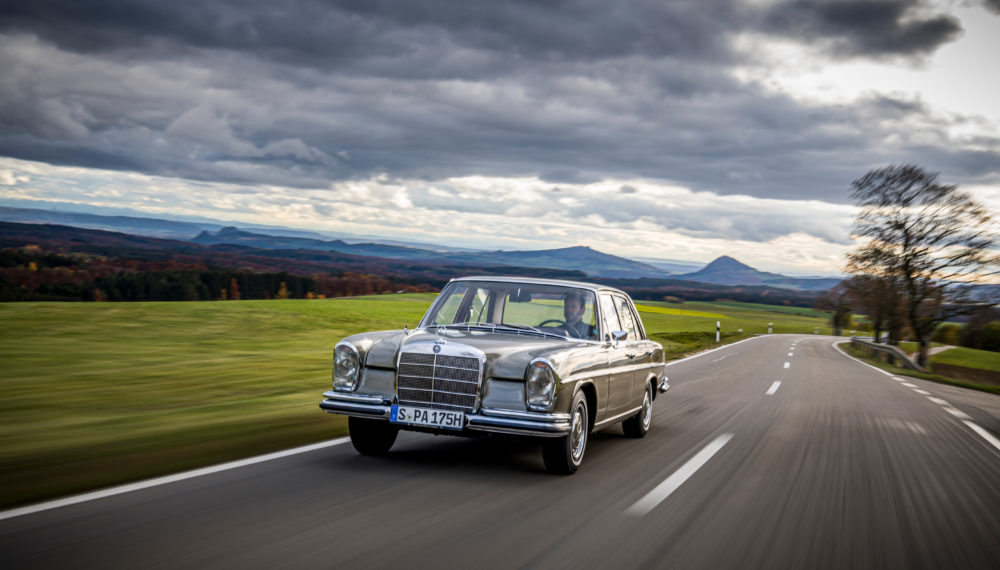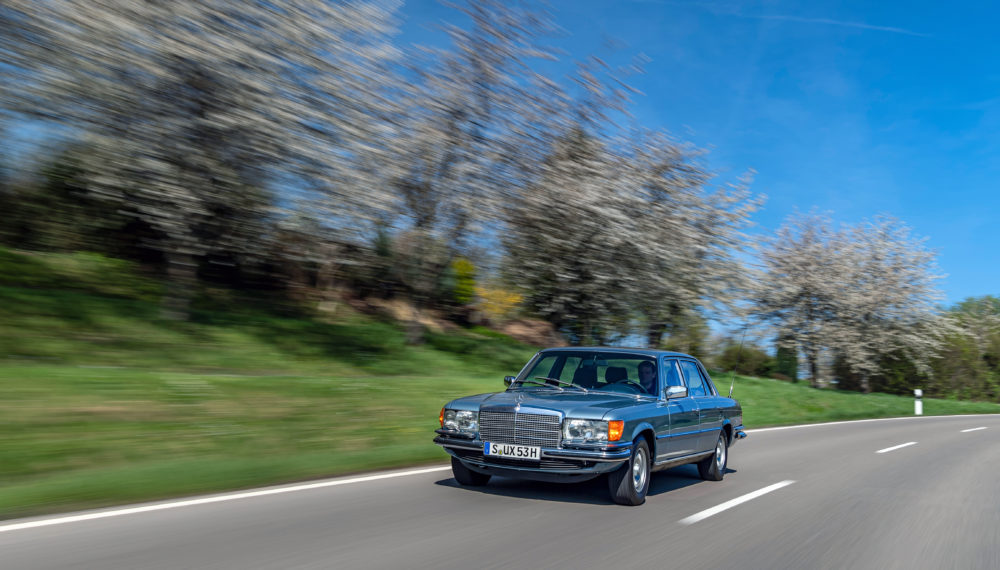On April 23, 1911 in Datona Beach Florida, Bob Burman set the world speed record in a Benz 200 hp. The record attempt occured over a mile with flying start allowing the Blitzen-Benz to reach the world record speed of 228.1 km/h (141.7 mph) and and equaly impressive 226.7 km/h (140.8 mph) with only a kilometer flying start.
The “Blitzen-Benz”, as the record-breaking car was called in the USA, finally proved in Daytona that it was the fastest car in the world: Burman drove the Benz 200 hp at a speed which was twice as fast as that of the aircraft of the time. The rail vehicle record of 210 km/h, set in 1903, was also overtaken: thanks to the Benz 200 hp, the motor car succeeded in superseding the railway as the fastest mode of transport. And the white record-breaking car – now decorated in America with a German Imperial Eagle as its logo – was so fast that no-one was able to challenge its position. Burman’s world record with the “Blitzen-Benz” was to remain unbeaten by any other vehicle for a period of eight years. It was not until 12 February 1919 that Ralph de Palma was able to set a new world record, reaching a speed of 241.2 km/h (149.875 mph) over the mile with flying start in his Packard at Daytona Beach.
The record-breaking car driven by Burman in 1911 made for highly effective publicity in North America, despite the fact that it could actually be viewed as the automotive antithesis to the stipulation put forward by company founder Carl Benz for a sensible vehicle capable of travelling at a maximum speed of 50 km/h. Indeed, it was precisely the successes of this car, initially baptised by American events manager Ernie Moross as the “Lightning Benz” – a name subsequently Germanised into the “Blitzen-Benz” – which at the start of the 20th century helped to reinforce the Mannheim-based brand even more firmly in the consciousness of a public which was now fascinated by motor sport.
The initial records of the Benz 200 hp were set in Europe: on 8 November 1909, Victor Héméry succeeded in breaking through the 200 km/h barrier not only for the first time in Europe, but also for the first time in a car with an internal combustion engine. At what was then the high-speed circuit of Brooklands in England, he achieved a speed on 202.648 km/h over the kilometre with flying start, and even attained 205.7 km/h for the half mile (804.65 metres) with flying start. However, the European race circuits were just not big enough to enable the record-breaking Benz 200 hp to demonstrate its full potential. This is why it was not until attempts were made at Daytona Beach that it came down to Bob Burman to achieve the goal of the absolute record for land vehicles of 228.1 km/h.
The car driven by Bob Burman was just one of a total of six examples of the Benz 200 hp which were actually built. Development of the vehicle started in 1909 at Benz & Cie. in Mannheim, under the guidance of Victor Héméry. Powered by an engine with a displacement of 21.5 litres, the powerful 147-kW (200-hp) car was based on the 150-hp Benz Grand Prix car. The four-cylinder in-line engine is still the engine with the largest displacement ever to be used in a racing car or record-breaking car by Mercedes-Benz and its preceding brands. The engine’s power was transferred to the rear axle by a four-speed manual transmission via an idler shaft and chain. In design terms, the car harked back to the successful Benz Grand Prix cars of 1908.
The competition car used in Daytona was sold to Stoughton Fletcher in 1913. He hired Bob Burman to rebuild the car during the course of 1914, and then sold “Blitzen-Benz” to Harry Harkness in 1915. On 2 November 1915, the significantly rebuilt vehicle re-emerged as the “Burman Special” to line up on the starting line in a race against Ralph de Palma’s Sunbeam at Sheepshead Bay, New York/USA. In 1916 Burman was killed whilst at the wheel of a Peugeot, heralding the return of the “Blitzen-Benz” to England. In Easter 1922 it appeared at Brooklands, where it sported white paintwork, a modified engine cover and a new radiator. Count Louis Vorow Zborowski had taken over the reins, but was unable to pilot the “Blitzen-Benz” to any further success, and in 1923 he tore the car apart.
Yet the legend of the “Blitzen-Benz” lives on. Witnesses to this age include several examples of the model as well as two high-quality replicas which have been preserved. One of the record-breaking Benz 200 hp cars is on display at the Mercedes-Benz Museum.
A driver from the formative years of motor racing: Bob Burman
The racing driver Robert “Bob” Burman was born on 23 April 1884 in Imlay City, Michigan. His world record run in the “Blitzen-Benz” in 1911 took place on his 27th birthday. In 1909 Burman had already won the Prest-O-Lite Trophy Race at the newly-opened Indianapolis Speedway, driving a Buick. He also lined up on the starting grid in 1911 for the premiere of the Indianapolis 500 Mile Race.
Ernie Moross, owner of the “Blitzen-Benz”, engaged the Buick driver for the 1911 season to take over at the wheel of the record-breaking German car in place of Barney Oldfield. In addition to the record attempts at Daytona Beach on 23 April, in the same year Burman also made record attempts in Indianapolis, on 29 May.
The man who had set the absolute speed record for land vehicles regularly took part in the Indianapolis 500 up until 1915. His best result was 6th place in 1915.
A few days prior to his 32nd birthday, on 8 April 1916, Burman was involved in an accident at the Corona Road Race in Corona, California. His Peugeot lost a wheel in the 79th lap, left the track and flipped over. Unfortunately the driver died as a result of severe head injuries. In addition to Burman and his co-driver Eric Schroeder, a track marshal also lost his life in the accident.










